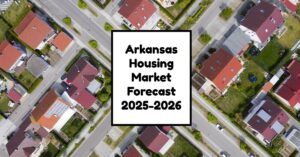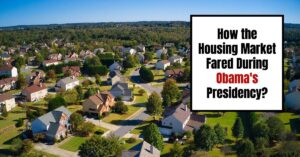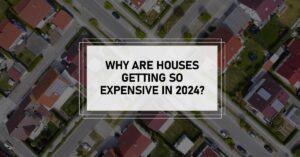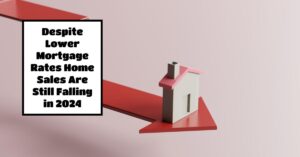Key Takeaways
- Average Home Value: $209,251 (up 3.1% YoY)
- Median Sale Price: $235,667 (as of July 31, 2024).
- Median List Price: $273,333 (as of August 31, 2024).
- Growing Areas: Fayetteville, Hot Springs, and Harrison are projected to see positive growth.
- Declining Areas: Regions like Pine Bluff, Forrest City, and Helena may experience price drops.
- Days to Pending: Homes are going pending in approximately 30 days.
- Sales Trends: 18.6% of sales are over list price, while 58.3% are under list price.
Current Market Overview
The Arkansas housing market continues to adapt to economic fluctuations, showcasing resilience among homebuyers. Recent data illustrates significant activity, as inventory levels fluctuate. According to Zillow, the average home value has risen, and homes are now pending sales within about 30 days. This quick turnover underscores the ongoing attraction of Arkansas real estate, despite regional variations.
In August 2024, the median sale price reached $235,667, indicating a competitive marketplace. With 18.6% of homes selling for more than the list price, this trend highlights a demand that allows for competitive bidding. However, it's essential to note that over half (58.3%) of homes sold are also reported under the list price, providing some negotiation opportunities for buyers.
Regional Performance and Trends
The performance of the Arkansas housing market varies significantly across different regions. Let's delve deeper into how various areas are positioned for growth or decline.
Regions Poised for Growth
- Fayetteville: This area is at the forefront of expected growth, projected to see an increase of 3.2% by August 2025. As one of the state's fastest-growing cities, Fayetteville is known for its vibrant community, excellent education system, and numerous amenities, making it a prime destination for homebuyers and investors.
- Hot Springs: Another promising location, Hot Springs, is forecasted to grow at 2.9%. The city's attractions, including hot springs and vibrant tourism, along with a growing population, contribute to its real estate appeal.
- Harrison: Harrison is also expected to witness positive changes, with a projected growth of 2.7%. The area's natural beauty and outdoor recreational opportunities draw individuals and families looking for a peaceful lifestyle.
- Searcy: With a predicted increase of 1%, Searcy is another area to watch. Known for its friendly atmosphere and good schools, it has been attracting homebuyers, which will contribute to ongoing appreciation in home values.
- Jonesboro: Although it exhibits a temporary decline in the short term, Jonesboro shows a tendency for stability and potential growth in the medium to long term, driven by diverse economic opportunities and demographic shifts.
Regions Facing Challenges
While some regions are poised for growth, others are struggling to maintain value:
- Helena: This region faces a challenging outlook with a forecasted decline of 10.4% by late 2025. Economic stagnation and diminishing job opportunities are significant factors contributing to this trend, making it crucial for potential buyers to tread carefully.
- Forrest City: Similarly, Forrest City is predicted to experience a decline of 6.1%. Issues like high unemployment rates and a declining population have negatively influenced the housing market, leading to lower demand for homes.
- Magnolia: Magnolia also faces a similar fate with a forecasted decline of 6.1%. Factors influencing this decline include economic challenges that have hindered growth and the housing supply's inability to meet demand effectively.
Will Home Prices Drop?
As we look ahead, many are left wondering if home prices will drop in Arkansas. The mixed signals highlighted in the forecast suggest that while growth areas like Fayetteville are expected to sustain or even increase their prices, other regions are predicted to face challenges.
Overall, market fluctuations will likely be influenced by broader economic factors such as fluctuating interest rates and employment levels. As mortgage rates remain variable, potential homebuyers may find themselves reconsidering their purchasing power, which could impact demand and eventually influence overall pricing trends.
Price Forecast Until August 2025
To fully comprehend the Arkansas housing market forecast, we must examine the key metropolitan statistical areas (MSAs) between September 2024 and August 2025. The following table outlines these projections for home price changes:
| Region Name | Price Forecast (30-09-2024) | Price Forecast (30-11-2024) | Price Forecast (31-08-2025) |
|---|---|---|---|
| Little Rock | 0% | -0.5% | -0.6% |
| Fayetteville | 0.1% | 0.2% | 3.2% |
| Fort Smith | -0.1% | -0.5% | 0.2% |
| Jonesboro | -0.3% | -1.1% | -1% |
| Hot Springs | 0.1% | 0% | 2.9% |
| Pine Bluff | -0.7% | -1.7% | -2.7% |
| Russellville | -0.2% | -0.8% | -1.1% |
| Searcy | 0.1% | -0.2% | 1% |
| Batesville | 0% | -0.9% | -2.2% |
| Paragould | -0.3% | -0.8% | -0.4% |
| Harrison | 0.2% | 0.3% | 2.7% |
| Mountain Home | -0.2% | -1.1% | -0.4% |
| Blytheville | -0.8% | -1.7% | -1.9% |
| El Dorado | -0.4% | -1.8% | -4% |
| Malvern | -0.3% | -0.9% | -0.8% |
| Camden | -0.2% | -1% | -3% |
| Forrest City | -0.8% | -2% | -6.1% |
| Magnolia | -0.6% | -2% | -6.1% |
| Arkadelphia | -0.4% | -1.2% | -0.8% |
| Helena | -1% | -3.3% | -10.4% |
Forecast for 2026
Looking beyond the immediate future to 2026, expectations can be set around several market dynamics:
- Urban Metro Growth: Urban centers like Fayetteville and Little Rock are forecasted to witness high demand, creating potential price stabilization or modest increases influenced by local economic developments and capital investments.
- Challenges for Smaller Towns: Areas like Pine Bluff or Helena might continue to see downward pressures unless revitalization efforts prove successful. Economic development programs and community investment could shift trends over time.
- Infrastructure Development: Planned infrastructural improvements throughout the state could support certain markets, particularly those linked to larger economic sectors, stimulating growth and job creation, which could indirectly lead to housing demand.
Overall Economic Considerations
The overall health of the Arkansas housing market will likely be influenced by changing consumer behaviors in response to market conditions. Homebuyers may become more cautious, especially if inflation and interest rates rise indefinitely, resulting in a tighter market. Job market stability will also remain a pivotal factor; areas with diverse economic bases are likely to fare better than those overly reliant on singular industries.
Homeownership rates and rental vacancy trends are crucial indicators to watch during this forecast period, as they can give insights into broader economic health and demand dynamics. Additionally, migration patterns can impact regions dramatically, with higher influx rates pushing home prices upward in urban centers while smaller towns may face an exodus, leading to declining values.
My Opinion
In my view, the Arkansas housing market forecast for 2025 pinpoints both potential growth and significant challenges. Areas like Fayetteville showcase attractive prospects for investors, while caution is warranted in declining regions. Understanding these local dynamics will be critical as the housing climate changes and buyers seek to make informed decisions amid this mixed market landscape.
Key Highlights
Average Home Value: $209,251 (3.1% annual increase)
Median Sale Price: $235,667 (as of July 2024)
Median List Price: $273,333 (as of August 2024)
Regions on the Rise
| Region | Forecasted Growth by 2025 |
|---|---|
| Fayetteville | 3.2% |
| Harrison | 2.7% |
| Hot Springs | 2.9% |
Regions Facing Challenges
| Region | Forecasted Decline by 2025 |
|---|---|
| Helena | -10.4% |
| Forrest City | -6.1% |
| Magnolia | -6.1% |
Overall Market Sentiment
Sales Trends: 18.6% of sales above list price; 58.3% below list price (as of July 2024).
Market Outlook: Mixed growth forecast expected with significant regional variation.











